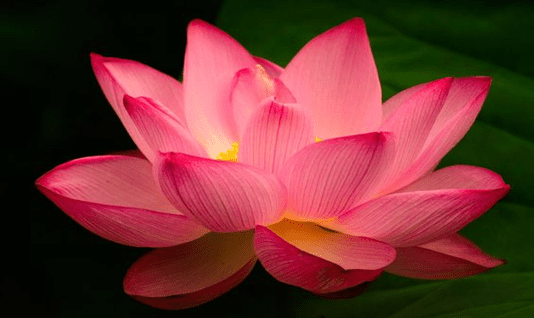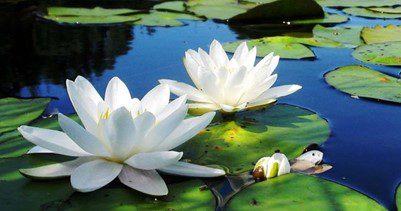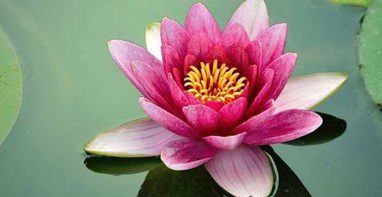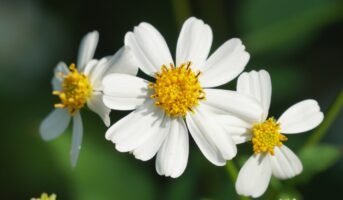The national flower of India is the lotus, and its scientific name is Nelumbo nucifera. It is a sacred flower uniquely positioned in ancient Indian mythology and art. It has long been considered an auspicious symbol of Indian culture and associated with its heritage and history.

Source: Pinterest
Lotus: Key facts
| Name of species | Nelumbo Nucifera |
| Taxonomic tree | Domain: Eukaryota
Kingdom: Plantae Phylum: Spermatophyta Subphylum: Angiospermae Class: Dicotyledonae |
| Family name | Nelumbonaceae |
| Common name | The sacred lotus, Laxmi lotus, Indian lotus, or simply lotus, Kamal, Padma, |
| Division of the plant | Angiosperms (Seed Plants) |
| Mode of nutrition | Autotrophic |
| Preferred climate | Tropical and Sub-Tropical / early to late summer |
| Native habitat | Aquatic (shallow wetland habitats, including floodplains, ponds, lakes, pools, lagoons, marshes, swamps, and the backwaters of reservoirs |
| Desirable plant features | Broad floating leaves and bright, fragrant flowers |
| Landscape uses | Outdoor Plant |
| Temperature | Between 30°C to 36 °C |
| Blooming time | Monsoon ( June to September) |

Source: Pinterest
Lotus: Physical description of the Indian national flower
India has a diverse array of plants and animals. One of India’s most significant and beautiful perennial aquatic plants is Nelumbo Nucifera. Due to its extensive medicinal and nutraceutical benefits, lotus is a significant industrial crop. It grows all over India and displays a wide range of ethnic variations and a huge morphological and genetic variety.
The delta regions and flood plains of slow-moving rivers are ideal environments for the growth of lotus plants. From stands of lotus, thousands of seeds fall to the pond’s bottom each year. While some may emerge right away, the majority are eaten by wildlife. The remaining seeds may go dormant for a long as the pond silts up and dries out. When floodwaters crack sediments carrying these seeds, the dormant seeds rehydrate and start a fresh lotus colony.
The lotus leaves are lifted high above the water, while their roots are embedded in the river or pond bottom soil. The lotus flowers are typically found above the thick stems extending several centimeters above the foliage. The plant can grow in water upto a depth of 200 cm (six ft seven in) because of the leaf stalks (petioles). The horizontal span of the peltate leaf blade or lamina can be 1 m (three ft three in). The flowers can grow up to 30 cm (12 in) in diameter, while the leaves can grow up to 80 cm (31 in) in diameter. The lotus bloom is visible in pink and white tones. The plants are very helpful to wildlife; it gives shade and shelter to the aquatic animal among the underwater portion of the plants. According to a research, the lotus has the capacity to control the temperature of its blossoms within a specific range, exactly like humans and other warm-blooded species do.
See also Know about: Moon Flower
Lotus flower: Structure
- Stem: The Lotus stem is located at the bottom of the water body and submerged in muddy soil. It changes into a rhizome, which serves as both a storage organ and an anchoring mechanism. Bunches of short, fibrous roots sprout from the stem internodes.
- Leaf: Simple leaves only have one per-leaf stem. From the rhizomatous stem, green, long, spherical, and hollow stalks protrude upward. Stalks that rise 2-3 cm above the water’s surface support the flowers and leaves. The stems and stalks may float in water due to their porous vasculature. Water does not penetrate the leaves’ waxy upper surface.
- Flower: The plant’s large, stunning blossoms, which are typically pink or white, are its most notable characteristic. A female reproductive organ with a cone-shaped center, the thalamus, is encircled by delicate petals. It is a teardrop-shaped blossom with a sharp apex and closely spaced petals. The transparent petals open in a spiral pattern with overlapping petals. After they open in the morning, the petals continue to bloom for three days. The petals close after dusk, trapping the pollinators. Beautiful pink in color. short-lived but unforgettable The blossom’s cupule is bright yellow in the center, surrounded by white filaments with yellow tips (the sepals). Pink petals encircle the edges. They have a subtle and pleasant fragrance.
- Fruits: The plant produces several nut-like fruits on the flat top of a fleshy, enlarged capsule-like structure that is broader at the top than the bottom. When fully developed, the entire structure dries, separates, and floats, releasing the fruits through numerous holes drilled into the flat surface.
Lotus flower: Habitat and distribution of the national flower of India
Nelumbo Nucifera or lotus is also known as the Egyptian bean. Australia and southern Asia are the native habitats of Lotus. N. Nucifera is currently very rare or extinct in the wild in Africa.
The lotus could also be found growing in semi-tropical conditions worldwide. Its native range is pervasive, starting from India and Sri Lanka (at altitudes up to 1,400 m or 4,600 ft within the southern Himalayas), through northern Indochina and East Asia with isolated locations at the Caspian, also as nearly all of Island Southeast Asia Bali, Indonesia, and Malaysia, New Guinea, and northern and eastern Australia. Taxonomic authorities consider the species native to those regions, which include South India, Sri Lanka, Island Southeast Asia, and Australasia. it’s been farmed for its edible seeds for almost 3,000 years.
It is a perennial aquatic plant that grows in shallow ponds, lagoons, and marshes. Rhizomes, which resemble roots, are sent into the mud and leaves rise above the water’s surface. Lotus flowers can flourish in dark areas, although they prefer warmer climates. To avoid the scorching heat, it is preferable to keep these blossoms in the shade in desert areas.
Despite the flower’s adaptability to a spread of aquatic environments, you ought to avoid growing it in mineral-rich water, especially hard and alkaline water. It is often because they may build up minerals in the water that could harm the plant over time. If you want to cultivate lotus plants in a container, you want to replenish evaporation by removing any hard water and adding fresh water.

Source: Pinterest
Lotus flower: How to grow?
The stems and rhizomes of the lotus are grown for food throughout the planet and the blooms for their beauty. The bulk of the plants is originally propagated through seeds. The seeds should first receive a minimum of six hours of direct sunlight per day after being planted in moist soil. Keep the temperature between 25°C to 30°C. The season for lotuses lasts from April through September. The roots are frozen during the winter and kept in a dry, cool environment.
Shaking within the water progressively removes the stolen from the water. Beautiful lotus leaves and blossoms are visible three months after harvest. Flowers are plucked every two days in the summer and every three days in the winter. After being harvested for eight months, the rhizome is edible. The tasty, starch-rich rhizome is often easily extracted from the soil after drainage.
Lotus flower: Care tips
Following are some care tips for maintaining the national flower of India.
- Maintain the water’s temperature of at least 21 °C as the lotus plant grows actively when the surface water is at an optimal temperature. Ideally, even the air temperature should be over 21 °C as well.
- Make sure your lotus gets full sun as it needs at least 5-6 hours of direct sunlight daily. Keep the surrounding foliage pruned to avoid sun blockage.
- Prune the yellow, damaged leaves and dying blossoms.You can also cut away new growth to keep it controlled.
- Use pond tablets specially formulated for aquatic plants to fertilise your lotus plant. Wait until the tuber has at least six leaves before you fertilise.
- Keep an eye out for pests. Caterpillars and aphids are a common problem affecting lotus leaves. Application of a little powdered pesticide on the leaves can protect the leaves from pests.
- Move the lotus into deeper waters during autumn to protect it against frost.
- Repot your lotus every year during spring.
How to grow lotus in bowls, pots and planters?
Lotus plants are perennials that shoot in spring and bloom during summer and autumn. Here’s how to successfully grow lotus in containers:
Sunlight
Choose a sunny location for your lotus plant, as it requires a minimum of 6 hours of direct sunlight to bloom beautifully.
Watering
When growing lotus in pots or bowls, maintain the water level about 5cm above the soil, ensuring the leaves are not submerged. Use normal tap water for watering.
Repotting
After purchasing a lotus plant, it’s important to repot it into a larger pot or bowl. For small varieties, opt for containers wider than 40cm with a depth of 20cm. Larger varieties thrive in pots or bowls that are 80cm wide with a depth of 30cm. To repot your lotus:
- Gently remove the plant from its nursery pot without disturbing the roots.
- Place the lotus plant in the centre of the new wide pot or bowl.
- Surround the lotus with topsoil (good garden soil), filling the container approximately one-third full. Avoid using potting mix.
- Add a layer of 3cm of pea gravel on top of the soil.
- Fill the pot or bowl with water, ensuring that the growing leaves remain above the water level.
Fertilisation
Once a year, between December and January, fertilise your lotus using special lotus satchels. Simply push the satchel into the edge of the bowl or pot until it reaches the bottom of the soil.
Lotus flower: Cultural significance
- The national flower of India, Lotus, is a freshwater plant that has been revered in Indian culture for centuries due to its beauty and symbolic significance. It is associated with Hindu deities, such as Brahma, Vishnu, and Lakshmi. Lotus is often used as a symbol of purity, enlightenment, and rebirth.
- Hinduism places mythical significance on the National Flowers of India. Vishnu and Lakshmi are typically pictured standing on the pink National Flowers of India, while Saraswati is usually pictured on a white National flower of India. “Lotus-Eyed One” is another name for the Hindu deity Vishnu.
- In Buddhism, a national flower of India, which blossoms from mud, represents heavenly beauty. Additionally, it stands for the purity of the body, voice, and mind. It’s a well-known flower because the bloom, which hangs above murky waters, also represents attachment and longing.
Lotus as a representation of rebirth and renewal
As lotus flowers emerge from the mud without stains, they are considered as a symbol of purity. Lotus flowers to the water every evening and open their blooms at dawn. Hence, they are also seen as symbols of rebirth, resilience, and strength across many cultures.
Lotus in ancient Indian art and literature
Besides its religious significance, the lotus is considered to have an important role in Indian art, literature, and architecture. It is found in everything from ancient sculptures to modern paintings.
Lotus in Indian architecture and design
The Baha’i House of Worship in India, known as Lotus Temple, is example of the modern Indian architecture and among the popular religious buildings in the world. The temple built on a 9.7-hectare site in south Delhi and open to all races, religions and castes. One of the striking features of this structure is that it has the shape of a lotus, which is considered sacred.
Why was lotus declared the national flower of India?
The lotus blossom may be a symbol of longevity, divinity, purity, and fruitfulness. The presence of the lotus flower dates back to ancient India. It aims to enhance the nation’s reputation in the world and support the preservation of the country’s virtues. consistent with the Bhagavad Gita and the Vedas, even as a lotus stays pure and unaltered despite growing in muddy water, people should rise and distance themselves from all worldly attachments.
Hindus attach particular significance since Goddess Saraswati, the goddess of learning is assumed to have her seat there and is frequently used in numerous religious rituals. The lotus flower was considered India’s national flower Because of its presence since the ancient period and also because of its noble meanings and cultural significance.
Lotus flower: Uses
The entire lotus plant has many economic and medical significance in addition to its beautiful appearance. the whole plant can be consumed. The petals are widely used for ornamental purposes, like garnishing.
Lotus: Culinary uses
- China, Korea, and Indonesia are among the bulk of East Asian nations that eat rhizomes and leaf stalks as vegetables.
- The rhizome is employed in salads, vinegar pickling, and cooked, chopped, and fried. It contains significant amounts of fiber, potassium, manganese, phosphorus, and copper, also as vitamins B1, B2, and C. A well-known nut that is frequently eaten raw is the lotus seed.
- They also can be fried or dry-roasted to create the snack Phool makhana, which is analogous to popcorn. Asian sweets, including mooncakes, rice flour pudding, and daifuku use lotus seed paste.
- The fully developed leaves typically won’t wrap and serve food. It’s said to be beneficial to one’s health to serve meals in India on a lotus leaf.
Lotus: Medicinal uses
The Indian National Flower provides a variety of medicinal benefits when used in herbal therapy.
- The lotus tea made up of the flower is used to treat heart problems. Additionally, its purifying qualities halt blood flow in wounds.
- The gastrointestinal system and reproductive systems benefit from the lotus root.
- It encourages the baby’s natural development when the mother is pregnant.
- Numerous health issues, including throat problem and skin discoloration, are treated with the lotus root. Additionally, it’s utilised to treat conditions including diarrhea and smallpox. The kidneys and spleen enjoy the lotus seed.
Lotus benefits in Ayurvedic medicine
- It is used in traditional Ayurvedic medicine to treat digestive disorders, various skin conditions and many other ailments.
- All the parts of the plant are used in Ayurvedic medicines.
- It acts as a tonic for heart and liver health.
It helps balance aggravated Pitta and lessen the symptoms of diarrhea and bleeding disorders, thanks to its cold (sita) and astringent (Kashaya) properties.
Modern scientific studies on the medicinal properties of lotus
As per some studies, lotus plant comprises a variety of phytochemicals, including flavonoids, alkaloids, and tannins, which are known to have potential medicinal benefits. It has been found that Lotuses possess antioxidant, anti-inflammatory, antimicrobial, and anti-cancer properties, making is suitable for use in modern medicine.
Some research studies have shown that lotus plant extracts may be effective in treating medical conditions, such as liver disease, cardiovascular disease, diabetes, and neurodegenerative disorders. Further, the lotus plant contains compounds that may help to promote skin health and reduce the signs of aging.
Lotus: Environmental uses
- Scientists have discovered that the lotus is crucial to denitrification, which helps keep the nitrogen equilibrium in water bodies. The plant not only absorbs a lot of nitrogen but also fosters a favorable environment for the bacteria that aids in nitrogen breakdown.
- Due to its strong tolerance for dryness and lack of water, the lotus plant is ideal for controlling soil erosion in desert areas. It also has several benefits for animal feeding, wildlife, and soil protection.
Lotus: Decorative uses
- Dried lotus seed heads are used around the world as decorations. Lotus blooms are offered as a form of worship in India.
Conclusion
For plant diversity, India is rated 10th in the world. Another Asian nation, Vietnam, also has the lotus as its national flower. The lotus flower comes in a wide range of hues, including white, pink, red, and purple. Lotus is seen as a symbol of prosperity and victory in Indian culture. It stands for wisdom and enlightenment. Lotus is officially known as Nelumbo Nucifera. One of the most significant national symbols is the lotus, which is the national flower. On January 26, 1950, the lotus was chosen as the national flower. The Buddhist and Hindu populations admire it and think it to be spiritual.
FAQs
Why is the lotus flower India's national flower?
The lotus flower is considered a holy and lucky sign in Indian culture. It was selected as the nation's national flower because it holds a unique place in the art and mythology of ancient India.
Can lotus be taken as medicine?
The blue lotus flower has been categorised as a mild stimulant and is currently utilised as a sleep aid and anxiety reliever. The most common products made from blue lotus are tea extracts and incense.
Why is the lotus flower so sacred?
Rebirth and resurrection are the flower's spiritual meanings. There is a connection between the lotus' everyday actions and the rebirth of life. We frequently see that the lotus is a symbol of reverence in eastern cultures. Because it represents the ways of life, it regarded as a sacred emblem.
Is eating lotus root good for your health?
Lotus roots are low in fat and sugar and are a healthy source of carbohydrates and fiber. Lotus root consists of numerous critical nutrients and minerals, include potassium, calcium, copper, diet C, diet B6, and iron.
Is lotus blossom is harmful?
The mechanisms that transfer any toxins into the plant's outer portions are the bulbs because the lotus plant's leaves and blooms are not poisonous, same is true of its roots.
Housing News Desk is the news desk of leading online real estate portal, Housing.com. Housing News Desk focuses on a variety of topics such as real estate laws, taxes, current news, property trends, home loans, rentals, décor, green homes, home improvement, etc. The main objective of the news desk, is to cover the real estate sector from the perspective of providing information that is useful to the end-user.
Facebook: https://www.facebook.com/housing.com/
Twitter: https://twitter.com/Housing
Email: [email protected]











